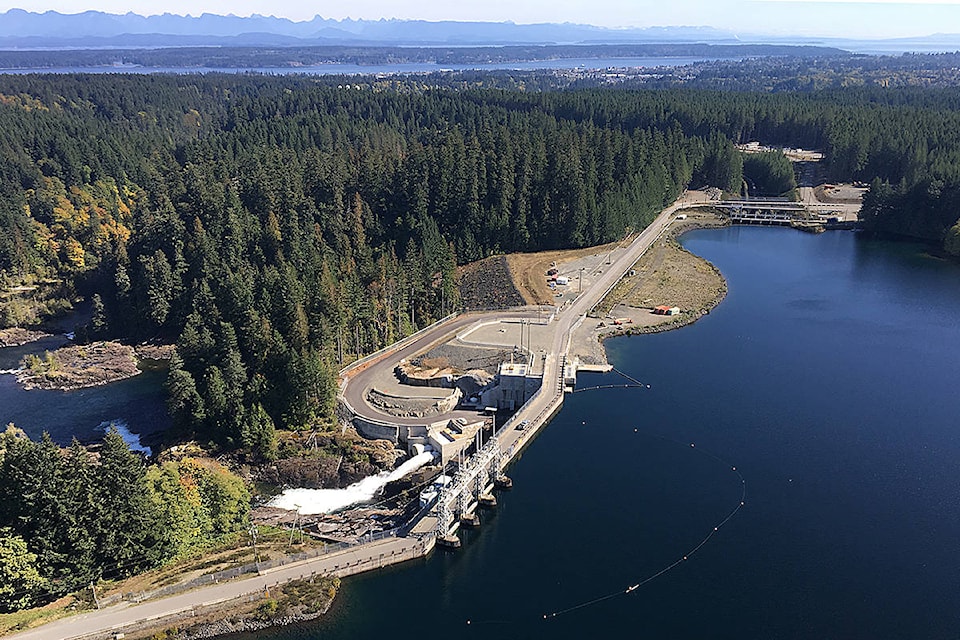The Campbell River hydroelectric system has set a record for lowest water inflow in 5o years.
“We started the winter with wet and mild weather, but since the third week of January, it has done the polar opposite, pardon the pun, with the tap having been almost turned off,” BC Hydro spokesperson Stephen Watson says
It has been cold and dry, with cumulative inflow since Feb. 1 setting a record for this time of year for the lowest water inflow in the last 50 years. The result, coupled with the customer demand for electricity throughout the province, looks like less water abundance within the watershed come this spring and summer.
It was a big and quick transition in January from high water inflows that were around 500-600 cubic metres per second (m3/s), to about 12 m3/s that we’ve been seeing the past few weeks – these rates are similar to water inflows during a dry summer. The Upper Campbell Reservoir/Buttle Lake hit a high of 220.3 m, around our flood buffer zone, in January, and BC Hydro was releasing extra water downstream for flood risk management for several weeks. Since then, with the dry weather and the provincial demand for electricity, the reservoir level has steadily dropped to about 215.05 today – a drop of over five metres. The reservoir has been dropping at a rate of about 10-15 centimeters per day. The reservoir level is currently at about a metre below average and dropping. Our water license has various ranges within the reservoir and the water level is within the preferred zone for this time of year, though it is projected to drop below that level around mid-March. Generally, reservoir levels could fluctuate from 212 metres to about 221 metres.
The John Hart generating station has been running at full capacity at about 135 MW, or a river discharge rate of 124 m3/s. This is to assist in meeting the high Vancouver Island customer demand for electricity.
Hydro has also been providing the 4 m3/s fish habitat base flow down Elk Falls Canyon. The end of the seasonal steelhead migration and spawning flows within the canyon is nearing, with the last two of the five releases of 10 m3/s down the canyon taking place March 12-14 and March 19-21.
BC Hydro has a water supply forecast that’s developed each year for the February to September period and updated on a monthly basis. This considers the year’s precipitation and snowpack, as well as historical inflows over the same period. This is important information as the utility looks ahead to possible projected summer reservoir levels. The February forecast to the September time period was 91 per cent of normal, and for the March update, the water supply forecast considerably lowered to about 76 per cent of normal. The forecast variation is about +/- 12 per cent should it be dryer or wetter.
In managing the watershed, BC Hydro has the added consideration this year of provincial power generation, where water levels are below normal at several large hydroelectric facilities on the Peace and Columbia river systems. BC Hydro anticipates running the Campbell River system at a higher capacity potentially into April should conditions stay cool and relatively dry around the province. they company has updated government fish agencies and the Comptroller of Water Rights, and have applied and received a variance to its license from the Comptroller to move the Upper Campbell Reservoir/Buttle Lake level lower than the preferred zone into April by generating more power.
The snowpack is lower than normal, though it typically continues to accumulate until the end of April. Conditions can change. At this time, with the current water abundance in the watershed and our facilities continuing to help meet electricity demand in the province, the summer reservoir recreation levels look to be lower than normal. The weather pattern is forecast to change next week with more seasonal conditions.
BC Hydro may provide an update to the community in April.
